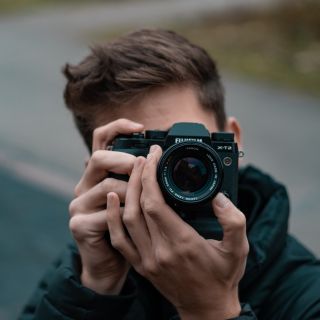Attention
What Do Your Eyes Miss?
Seeing through a camera’s lens.
Posted February 5, 2023 Reviewed by Jessica Schrader
Key points
- A camera’s sensor has many pixels and it sees a full-detailed picture all of the time. But the eye can’t freeze and record all of the details.
- While the camera can and does record what’s actually there, it can’t reproduce what was in your mind when you took the picture.
- Buddhists refer to a "beginner’s mind"—a childlike curiosity that’s unbiased and un-opinionated. Using a beginner’s mind, what's different?

Take a look at a sensational scene in your backyard or halfway around the world and then photograph what you see. Let some time pass and then retrieve the picture. Take a look at the picture. Which details did you miss seeing with your own eyes when you first snapped the shot? What did the camera capture without your conscious intention? Your brain and emotions beg you to remember images that seem awesome and noteworthy. Preserving them in your awareness ensures enjoyment over and over again. But you may not want to trust your memory to recall the details.
A camera lens captures the visual image your brain identifies. The camera’s sensor then records what is actually present in its memory. Ironically, it can record much more than what you’re carefully attending to as you snap the picture. So you may wind up with unintended additional features. Why is that? Since a camera’s sensor has many pixels, it sees a full-detailed picture all of the time. But the eye can’t freeze and record all of the details. Also, your eyes have a blind spot where the optic nerve connects to the retina, though you would probably never notice it. Fortunately, your brain fills in the necessary information from the other eye. But while the camera can and does record what’s actually there, it can’t reproduce what was in your mind when you took the picture.
Now try to capture a scene, live action, a person, an object, or a color. In thinking about your proposed creation you want to focus narrowly on replicating precisely what you had in mind. This includes as many aspects as possible of what your eyes saw at that very moment in time. And so you carefully aim, frame, and click; or maybe you hurry to capture live action—something that’s getting ready to bolt, flee, fly.
Here’s an example. Imagine that you took a hike in the mountains during early fall. Visualize a palate of deeply colored leaves that flood your senses. Notice the trees shedding chocolate-hued bark, uncovering their pale under-skins. The sun’s filtered light warms the space between the trees and casts a sparkle on the swaying greenery.
Late-season foliage and berries hang from the trees like Christmas ornaments. Then you look at the photo and it’s not what you remember seeing. The camera takes in and records only what it is capable of recording—everything physically present but not necessarily your intentions. If you are disappointed when you look at the resulting photo, consider doing it with what the Buddhists call a beginner’s mind—a childlike curiosity that’s unbiased and un-opinionated. See what’s actually there, not just the slice of time and space you envisioned at the time you took the picture. Perhaps your camera saw something remarkable that you didn’t. I found that out firsthand.
A memorable scene comes to mind from my own experience. Some jagged rocks jut out of the ocean offshore in Shell Beach, California, a small non-touristy town adjacent to its famous cousin, Pismo Beach. The quiet, beach-bungalow framed community has a lovely, quiet, and peaceful oceanfront park with few visitors. I chose to sit on a bench right there overlooking the scene which my companion’s camera lens captured in a pleasing way. What I mean is that I liked the way I looked—something that seems to happen less and less as I age.
Weeks later, I pulled up the image. What I remembered turned out to be much less interesting than what I saw in the snapshot. Yes, the camera produced an accurate image of my likeness at that place and time but so much more. My wind-swept hair reminded me of the vigorous coastal gusts. The paper cup in my hand brought to mind the independent small-town coffee shop where I found a custom brew to-go along with a chatty server interested in where I was coming from and headed to. The photo also evoked the pleasant drive up the coastal highway from Los Angeles to San Francisco on my birthday. It gave me a chance to be grateful for my good fortune and health in what is now my old age.
Using a beginner’s mind, what do you now see that you didn’t notice when you shot a particular image in the first place? The camera freezes everything and displays only the moment the picture was taken, so you now have the opportunity to spend as much time as you want to review that moment. Remember, you’re not looking for anything in particular in the picture. Rather, you are becoming aware of things that the camera saw but didn’t register in your conscious mind.
Whether you now see something amazing or quite ordinary is not the point of this exercise. Rather it’s a reminder that what we choose to focus on is what we see and remember. The rest escapes our attention. Our brains cannot take everything in, to process and preserve as memory. But it doesn’t mean that what is at the periphery or beyond our notice is less interesting. The point is to occasionally de-focus and just see what’s there, to purposely look beyond the foreground. You can do this quite well with what the camera captures, but you can also take the time to let more of life in, metaphorically, by broadening your frame.
Based on a chapter from the author’s book, Inward Traveler: 51 Ways to Explore the World Mindfully, 2018.




